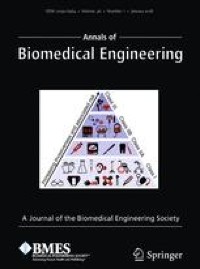Abstract
Tissue-level biomechanical properties and function derive from underlying cell signaling, which regulates mass deposition, organization, and removal. Here, we couple two existing modeling frameworks to capture associated multiscale interactions—one for vessel-level growth and remodeling and one for cell-level signaling—and illustrate utility by simulating aortic remodeling. At the vessel level, we employ a constrained mixture model describing turnover of individual wall constituents (elastin, intramural cells, and collagen), which has proven useful in predicting diverse adaptations as well as disease progression using phenomenological constitutive relations. Nevertheless, we now seek an improved mechanistic understanding of these processes; we replace phenomenological relations in the mixture model with a logic-based signaling model, which yields a system of ordinary differential equations predicting changes in collagen synthesis, matrix metalloproteinases, a nd cell proliferation in response to altered intramural stress, wall shear stress, and exogenous angiotensin II. This coupled approach promises improved understanding of the role of cell signaling in achieving tissue homeostasis and allows us to model feedback between vessel mechanics and cell signaling. We verify our model predictions against data from the hypertensive murine infrarenal abdominal aorta as well as results from validated phenomenological models, and consider effects of noisy signaling and heterogeneous cell populations.



Δεν υπάρχουν σχόλια:
Δημοσίευση σχολίου
Σημείωση: Μόνο ένα μέλος αυτού του ιστολογίου μπορεί να αναρτήσει σχόλιο.